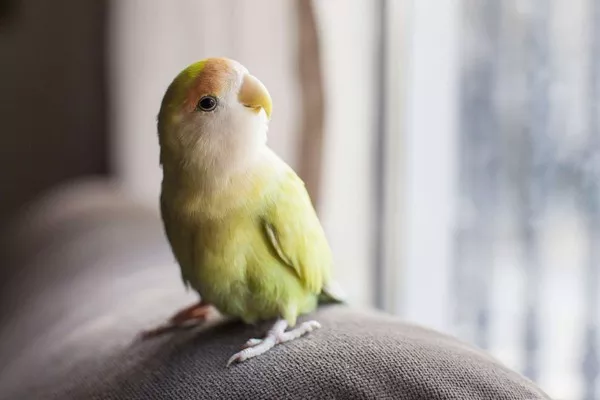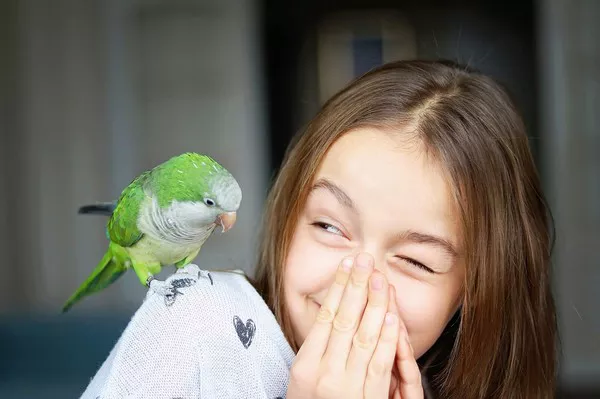Ringneck parrots, also known as Indian Ringneck parrots, are captivating avian species known for their vibrant plumage and charismatic personalities. Understanding their reproductive behavior, including egg-laying, is essential for pet owners and enthusiasts. In this article, we delve into the fascinating world of Ringneck parrot breeding, exploring the factors that influence their egg-laying patterns and providing insights into the average number of eggs they lay.
1. Sexual Maturity
Ringneck parrots reach sexual maturity at around 1 to 3 years of age, although individual variations may occur. Once they reach this stage, they become capable of reproducing and producing fertile eggs. It is important to note that responsible breeding should be undertaken only when the birds are in optimal health and proper conditions are provided.
2. Environmental Factors
The reproductive behavior of Ringneck parrots is influenced by environmental factors, particularly the availability of a suitable nesting area and favorable conditions. Providing a nest box or suitable nesting environment is important to stimulate their breeding instincts. A cozy, well-designed nesting area with appropriate dimensions and nesting materials encourages breeding behavior and egg-laying.
3. Clutch Size
The clutch size of Ringneck parrots can vary, typically ranging from 2 to 8 eggs. However, the average clutch size is often around 4 to 6 eggs. It is important to note that not all eggs laid by a female Ringneck parrot will be fertile or successfully hatch into chicks. Some eggs may not be fertilized, while others may not develop properly or experience embryonic complications.
4. Egg-Laying Process
The female Ringneck parrot is responsible for laying the eggs. The process begins with the female preparing the nest and exhibiting nesting behaviors such as inspecting the nesting area, rearranging nesting materials, and spending extended periods inside the nest box. Once the nest is prepared to her satisfaction, the female will lay one egg every other day until the clutch is complete.
5. Incubation Period
After the female has laid all the eggs in the clutch, she will typically begin incubating them. The incubation period for Ringneck parrot eggs is around 22 to 24 days on average. During this time, the female will diligently keep the eggs warm by sitting on them for extended periods, ensuring the optimal temperature and humidity for proper development.
6. Role of the Male
While the female is primarily responsible for incubating the eggs, the male Ringneck parrot also plays a supportive role during the breeding process. The male may assist in feeding and caring for the female, ensuring she receives proper nutrition and maintaining a peaceful environment. It is important to provide a calm and stress-free atmosphere during the incubation period to promote successful hatching.
7. Hatching and Chick Care
After the incubation period, the eggs begin to hatch, and the adorable chicks emerge. The hatching process can span several hours or even days, with each chick breaking through its shell at its own pace. Once the chicks have hatched, they are dependent on their parents for food, warmth, and protection. Proper nutrition and a supportive environment are crucial during this phase to ensure the health and well-being of the hatchlings.
8. Parental Care and Weaning
Ringneck parrot parents are generally attentive and dedicated caregivers. They feed the hatchlings regurgitated food, which provides essential nutrients for their growth. As the chicks mature, they gradually transition to solid foods. The weaning process typically takes several weeks, during which the chicks learn to eat independently and become more self-sufficient.
Conclusion
The number of eggs a Ringneck parrot lays can vary, with clutch sizes ranging from 2 to 8 eggs, but typically averaging around 4 to 6 eggs. Providing a suitable nesting environment, ensuring optimal health, and creating a stress-free atmosphere are key factors in encouraging breeding behavior. Understanding the reproductive behavior and egg-laying process of Ringneck parrots allows pet owners and breeders to better support their natural instincts and promote successful breeding outcomes.
Related Topics:


























